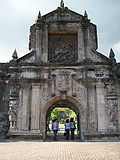(a) All cultural agencies concerned shall individually maintain an inventory, evaluation and documentation of all cultural properties it has declared according to their category and shall submit the same to the Commission. For cultural property declared as Immovable Cultural Property, the appropriate cultural agency shall, after registration, give due notice to the Registry of Deeds having jurisdiction for annotation on the land titles pertaining to the same;
(b) Local government units, through their cultural offices, shall likewise maintain an inventory of cultural property under its jurisdiction and shall furnish the Commission a copy of the same;
(c) Both cultural agencies concerned and local government units shall continuously coordinate in making entries and in monitoring the various cultural properties in their respective inventory;
(d) All government agencies and instrumentalities, government-owned and/or controlled corporations and their subsidiaries, including public and private educational institutions, shall report their ownership and/or possession of such items to the pertinent cultural agency and shall register such properties within three years from the effectivity of this Act;
(e) Private collectors and owners of cultural property shall register such properties, within three years from the effectivity of this Act. The private collectors and owners of cultural property shall not be divested of their possession and ownership thereof even after registration of said property as herein required.
Information on registered cultural properties owned by private individuals shall remain confidential and may be given only upon prior consent of the private owner. The Commission shall operate the Registry in the NCCA portal cultural databank.






















